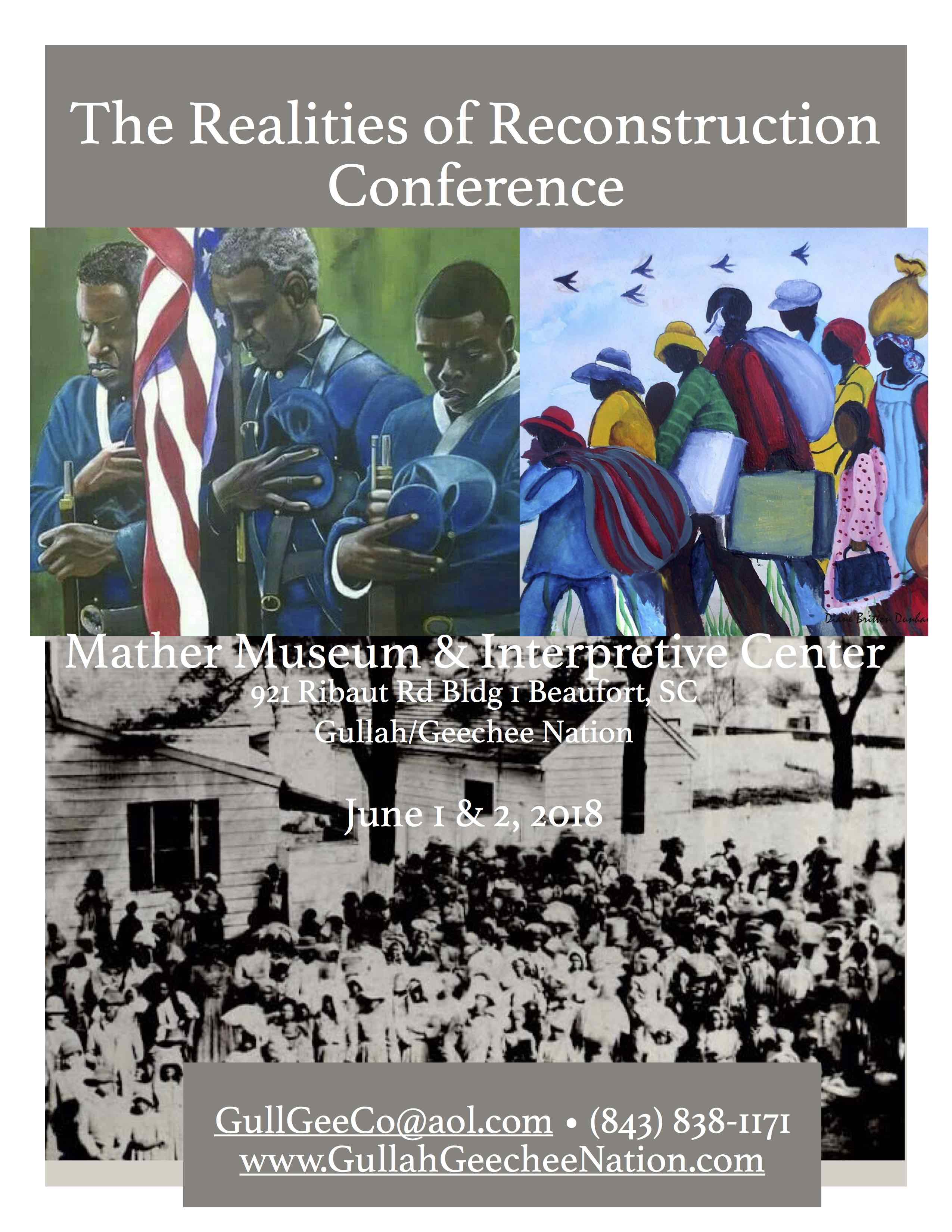One year ago, hundreds of people gathered together on historic St. Helena Island, SC in celebration of a major victory-receiving the Reconstruction Era National Monument designation for multiple sites in Beaufort County, SC at Gullah/Geechee. Since that time, institutions and organizations have started focusing on the history of the timeframe from 1865 to 1877 in order to offer visitors to St. Helena Island, Beaufort, and Port Royal numerous places in which they can learn the importance of the era that followed the end of the United States Civil War.
On January 12, 2018, the public is invited to join the National Park Service (NPS) and park partners to celebrate the one year anniversary of the creation of Reconstruction Era National Monument. Festivities will kick off at 10 a.m. with a special program featuring music and remarks from the NPS, United States Congressional delegation and park partners at the Beaufort Arsenal, located at 713 Craven Street in Beaufort. The highlight will be the unveiling of a unique piece of art by Gullah/Geechee artist Sonja Griffin Evans to celebrate the park’s anniversary.
From noon 4 p.m., special talks, tours and activities will be offered at each of the four sites comprising Reconstruction Era National Monument:
● Beaufort Arsenal – Tours of Beaufort’s downtown Reconstruction-related sites.
● Darrah Hall at Penn Center – Talks, junior youth praise dance and programs on Reconstruction.
● Brick Baptist Church – Praise dances, spirituals and educational programs.
● Camp Saxton via Fort Fredrick site – Fort tours and activities relating to the first reading of the Emancipation Proclamation at Camp Saxton on January 1, 1863.
● Old Beaufort Firehouse – NPS and park partners will offer a variety of educational information about Reconstruction and historic Lowcountry.
All of the events for the day are free.
The Reconstruction Era National Monument is dedicated to commemorating the period from 1861 through 1900 when nearly four million previously enslaved Africans sought to integrate into a free society and into the educational, economic, and political life of the country that they actually built. The Gullah/Geechee Sea Island Coalition in collaboration with Gullah African Diaspora Artists (GADA) will host a conference that will delve deeply into the Gullah/Geechee story of Reconstruction. The “Realities of Reconstruction Conference” will be held at the new Mather Museum and Interpretive Center which is located at the historic Mather School campus which is now the Technical College of the Lowcountry. The conference will give the participants an opportunity to visit several sites beyond those that are officially a part of the Reconstruction Era National Monument. It will conclude with a tribute to Harriet Tubman held at the Combahee River where she led a historic raid along with Colonel Montgomery during the US Civil War. Registration for this interactive conference is now open at
https://www.eventbrite.com/e/realities-of-reconstruction-conference-tickets-41538624143

Hunnuh cum and bring de famlee fa celebrate Reconstruction een Beaufort County @GullahGeechee!
www.GullahGeecheeNation.com





